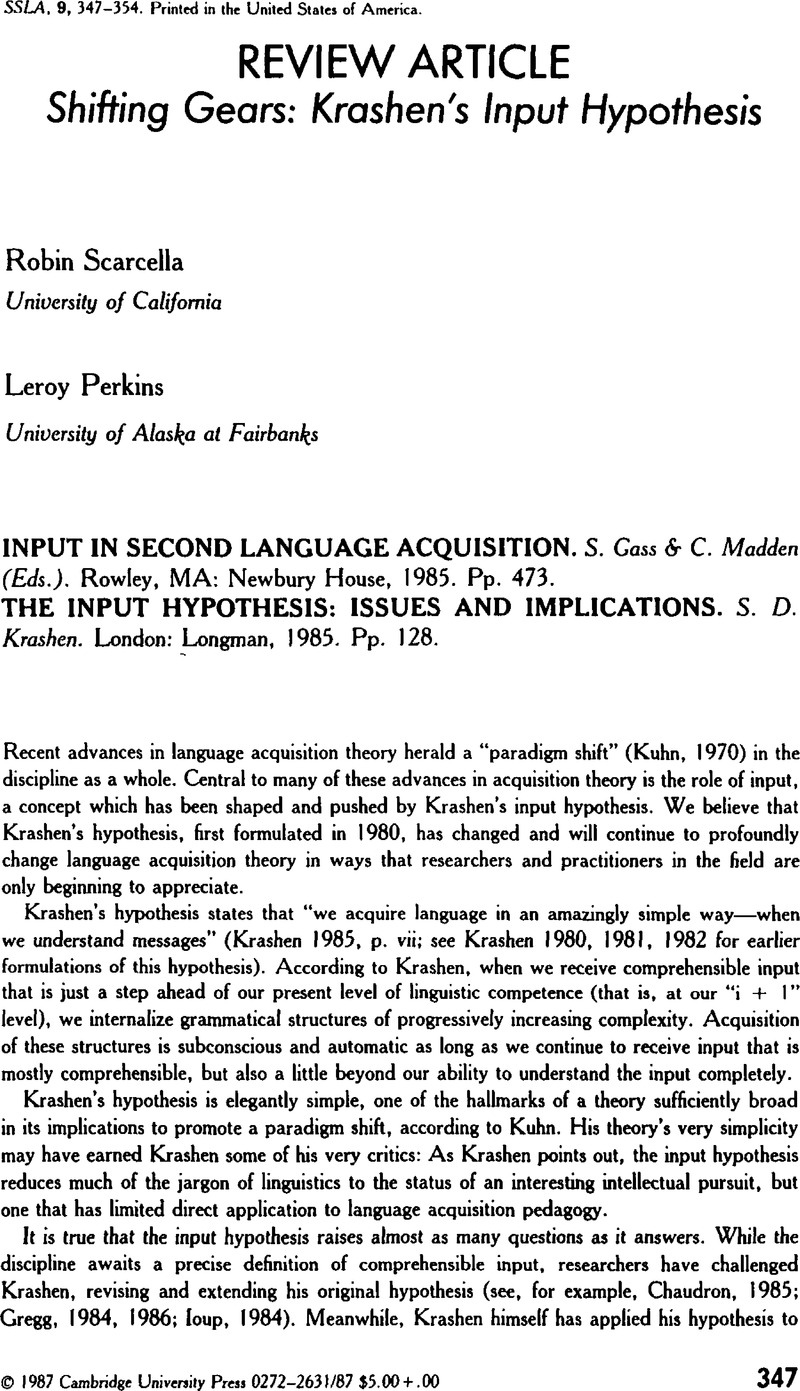Crossref Citations
This article has been cited by the following publications. This list is generated based on data provided by Crossref.
DeKeyser, Robert M.
1988.
Communicative processes and strategies.
Annual Review of Applied Linguistics,
Vol. 9,
Issue. ,
p.
107.
DeKeyser, R.
1990.
Towards a valid measurement of monitored knowledge.
Language Testing,
Vol. 7,
Issue. 2,
p.
147.



